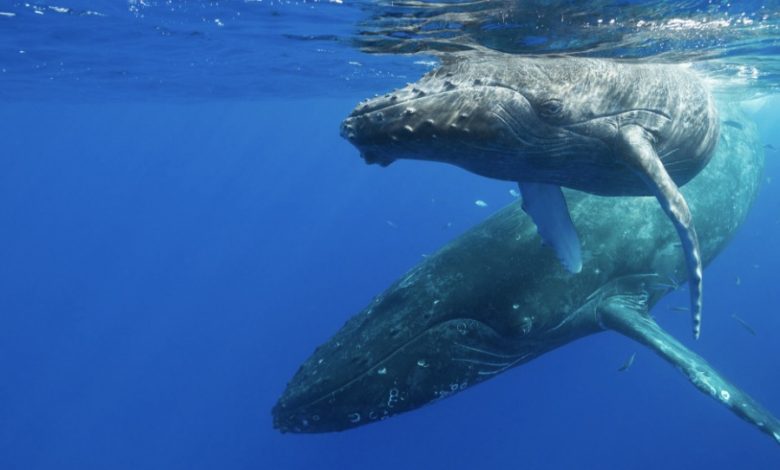Mysticetes

Mysticetes
See also: Mysticeti
Mysticetes are also known as baleen whales. They have a pair of blowholes side by side and lack teeth; instead they have baleen plates which form a sieve-like structure in the upper jaw made of keratin, which they use to filter plankton from the
water. Some whales, such as the humpback, reside in the polar regions where they feed on a reliable source of schooling fish and krill.[11] These animals rely on their well-developed flippers and tail fin to propel themselves through the water; they swim by moving their fore-flippers and tail fin up and down. Whale ribs loosely articulate with their thoracic vertebrae at the proximal end, but do not form a rigid rib cage. This adaptation allows the chest to compress during deep dives as the pressure increases.[12] Mysticetes consist of four families: rorquals (balaenopterids), cetotheriids, right whales (balaenids), and grey whales (eschrichtiids).
The main difference between each family of mysticete is in their feeding adaptations and subsequent behaviour. Balaenopterids are the rorquals. These animals, along with the cetotheriids, rely on their throat pleats to gulp large amounts of water while feeding. The throat pleats extend from the mouth to the navel and allow the mouth to expand to a large volume for more efficient capture of the small animals they feed on. Balaenopterids consist of two genera and eight species.[13] Balae
nids are the right whales. These animals have very large heads, which can make up as much as 40% of their body mass, and much of the head is the mouth. This allows them to take in large amounts of water into their mouths, letting them feed more effectively.[14] Eschrichtiids have one living member: the grey whale. They are bottom feeders, mainly eating crustaceans and benthic invertebrates. They feed by turning on their sides and taking in water mixed with sediment, which is then expelled through the baleen, leaving their prey trapped inside. This is an efficient method of hunting, in which the whale has no major competitors.[15]
